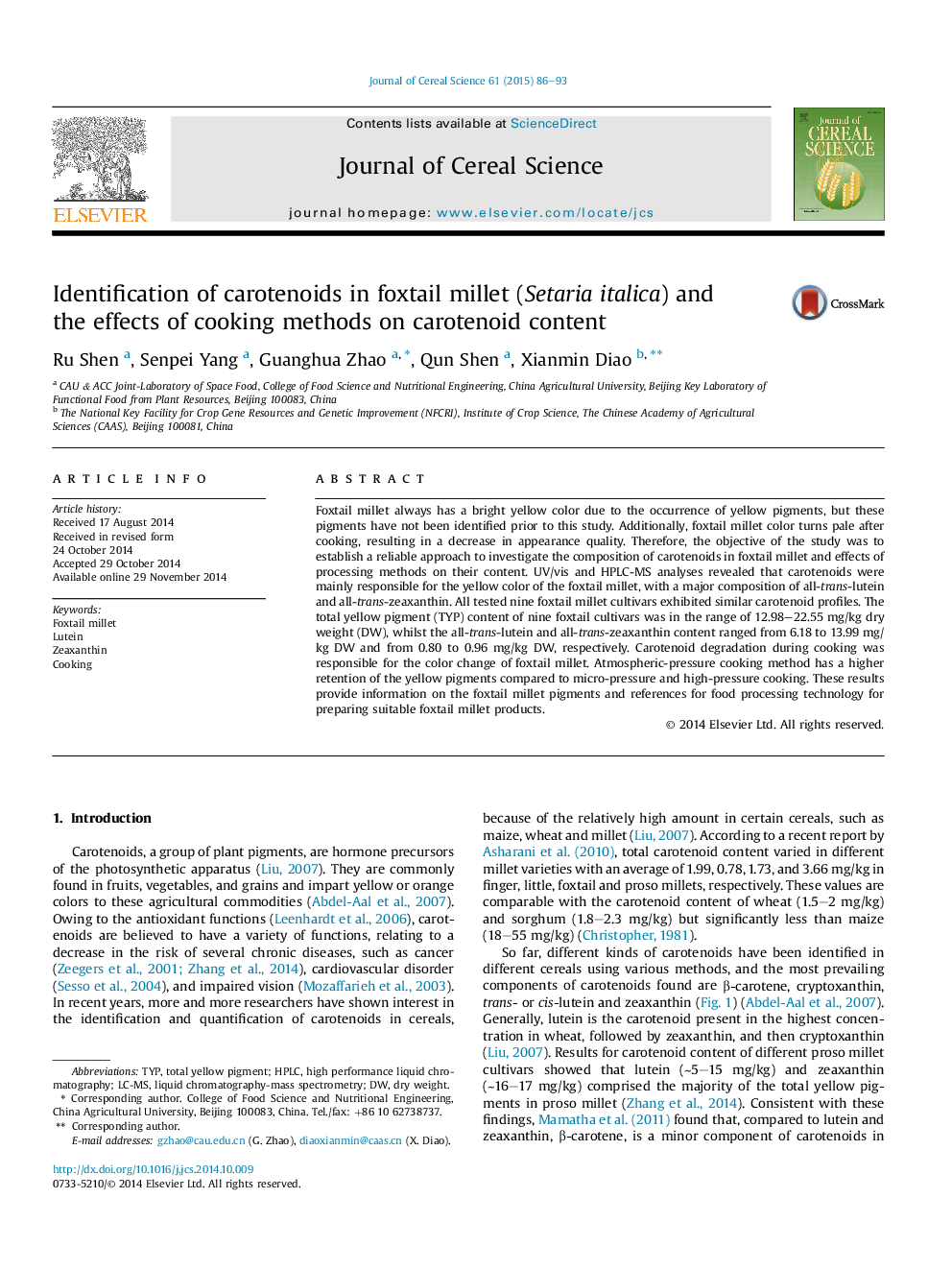| Article ID | Journal | Published Year | Pages | File Type |
|---|---|---|---|---|
| 4515704 | Journal of Cereal Science | 2015 | 8 Pages |
•Carotenoids in foxtail millet were identified for the first time.•All-trans-lutein and all-trans-zeaxanthin are the major carotenoids in foxtail millet.•Atmospheric-pressure cooking has greater carotenoid retention in foxtail millet than pressure cooking.•Carotenoid degradation during cooking is responsible for the color change of foxtail millet.
Foxtail millet always has a bright yellow color due to the occurrence of yellow pigments, but these pigments have not been identified prior to this study. Additionally, foxtail millet color turns pale after cooking, resulting in a decrease in appearance quality. Therefore, the objective of the study was to establish a reliable approach to investigate the composition of carotenoids in foxtail millet and effects of processing methods on their content. UV/vis and HPLC-MS analyses revealed that carotenoids were mainly responsible for the yellow color of the foxtail millet, with a major composition of all-trans-lutein and all-trans-zeaxanthin. All tested nine foxtail millet cultivars exhibited similar carotenoid profiles. The total yellow pigment (TYP) content of nine foxtail cultivars was in the range of 12.98–22.55 mg/kg dry weight (DW), whilst the all-trans-lutein and all-trans-zeaxanthin content ranged from 6.18 to 13.99 mg/kg DW and from 0.80 to 0.96 mg/kg DW, respectively. Carotenoid degradation during cooking was responsible for the color change of foxtail millet. Atmospheric-pressure cooking method has a higher retention of the yellow pigments compared to micro-pressure and high-pressure cooking. These results provide information on the foxtail millet pigments and references for food processing technology for preparing suitable foxtail millet products.
